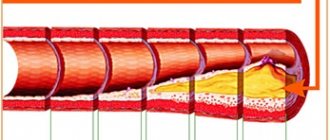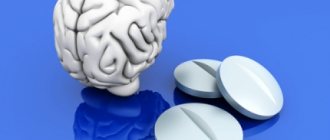Anonymously
Around the clock
Attention! The material contains information about substances, the use of which can cause serious harm to your health!
Neuroleptics are antipsychotic drugs that are used to treat severe mental conditions such as mania, hallucinosis, or psychosis. Despite their widespread use in medical practice, tranquilizers are also used to achieve a drug “high”: this leads to the development of severe pharmaceutical dependence.
- What are neuroleptics?
- The effect of neuroleptics on the body
- Signs of antipsychotic drug use
- Side effects from antipsychotics
- Contraindications
- Types of antipsychotics
- Typical antipsychotics
- Atypical antipsychotics
- New generation neuroleptics
- The safest antipsychotic
- Neuroleptics without sedation
- List of antipsychotics
- First generation neuroleptics
- Second generation neuroleptics
- Neuroleptics of the latest generation
- Consequences of neuroleptics
- Neuroleptics and alcohol
- Antipsychotic drug poisoning
- Dyskinesia from neuroleptics
- Insomnia
- Disorders of the nervous system
- Overdose of antipsychotics
- FAQ
- When are antipsychotics prescribed?
- What is neuroleptic syndrome?
- Can you buy antipsychotics without a prescription?
- How to get off antipsychotics? Help from specialists at the Zdravnitsa clinic
Treatment prices:
| Service | Price, rub) |
| Types of therapies | |
| Standard detoxification therapy | 3 500 ₽ |
| Double Detox Therapy | 6 000 ₽ |
| Enhanced Detoxification Therapy | 7 500 ₽ |
| Maximum detoxification therapy | 9 500 ₽ |
| Quick sobering up at home | 7 500 ₽ |
| Hospital at home 1 day | 22 000 ₽ |
| Advanced hospitalization | 15 000 ₽ |
| Treatment in hospital | |
| Accommodation | |
| Economy chamber (6 beds) | 2 000 ₽ |
| Standard room (4 beds) | 3 000 ₽ |
| Increased comfort (2 seater) | 5 500 ₽ |
| VIP chamber (1 person) | 12 500 ₽ |
| Individual post 24/7 | 5 000 ₽ |
| Medical and social rehabilitation 21 days | 140 000 ₽ |
| Service | Price, rub) |
| Initial consultation with a narcologist | for free |
| Consultation with a psychologist | 3 000 ₽ |
| Psychiatrist consultation | 5 000 ₽ |
| Coding at home Torpedo | 7 500 ₽ |
| Express output and encoding (doublet) | 13 500 ₽ |
| Coding using the Dovzhenko method | 12 000 ₽ |
| Hypnosis classic session | 13 000 ₽ |
| Ericksonian hypnosis session (NLP) | 8 000 ₽ |
| Coding method Torpedo | 5 500 ₽ |
| Double block | 8 000 ₽ |
| Esperal injection for 1 year | 9 900 ₽ |
| Tetlong for 3 months | 10 500 ₽ |
| Esperal gel for 1 year | 15 000 ₽ |
| Selincro course of therapy | 12 500 ₽ |
| Implantation of Disulfiram for 1 year | 18 000 ₽ |
| Vivitrol injection for 1 month | 26 000 ₽ |
| Naltrexone stitching for 3 months | 35 000 ₽ |
| Neuroimplantation Prodetoxon for 6 months | 47 500 ₽ |
| Narcopsychotherapy session | 50 000 ₽ |
| Neutralization of encoding | specify |
| Psychodiagnostics / pathological diagnostics | 7 500 ₽ |
| Psychotherapy session | 5 000 ₽ |
| Family psychotherapy | 6 000 ₽ |
| Outpatient rehabilitation in Moscow | 33 000 ₽ |
Expand
We will select an individual treatment plan
Free consultation 8-800-200-27-23
Signs of antipsychotic drug use
To reduce the side effects of antipsychotic drugs, antidepressants and other stimulants are used in psychiatric practice. The selection of relevant pharmaceuticals requires a long time and careful monitoring by medical personnel.
Recreational use of tranquilizers leads to dramatic changes in a person's appearance and behavior. If the behavior and appearance of a loved one has changed, you should pay attention to the following symptoms of drug addiction:
- Reduced reaction speed, general inhibition;
- Slow speech;
- drooping eyelids;
- Drowsiness, hypersomnia;
- Sudden weight loss or gain;
- Pallor of the skin and mucous membranes;
- Decreased intellectual abilities;
- General negligence of appearance. Due to weakness, the addict neglects personal hygiene, cleaning the apartment, and so on.
Some drug addicts combine taking tranquilizers with alcohol. As a result of this combination, the liver is destroyed, which leads to serious illness and changes in appearance: brittle hair, nail plates, yellowing of the skin, and so on.
MOTIVATION OF A DEPENDENT FOR TREATMENT
Side effects from antipsychotics
The doctor prescribes antipsychotics based on the patient's medical history and current condition. Vigilance helps minimize the harm of antipsychotics. Independent, inept use of drugs leads to adverse reactions, the development of addiction and undesirable mental states. Due to recreational use, addicts face the following side effects:
- General excitement;
- Anxiety;
- Uncontrollable desire to move due to discomfort in the limbs;
- Impaired liver and kidney function;
- Hypersomnia;
- Sleep disturbances;
- Endocrine disorders, incl. development of metabolic disorders leading to weight gain;
- Diseases of the cardiovascular system.
Contraindications
Antipsychotics should not be taken simultaneously with alcoholic beverages. Some drugs should not be used during pregnancy and lactation, or for people with acute heart, kidney or liver diseases. Each drug has its own list of contraindications. In this regard, the over-the-counter sale of antipsychotics is strictly prohibited.
Ambulatory treatment
Types of antipsychotics
There are several types of tranquilizers that are used to treat mental disorders, as well as for premedication before surgery.
Typical antipsychotics
Typical antipsychotics are effective in suppressing severe mental conditions but cause chronic fatigue syndrome. These include Haloperidol, Chlorprothixene, Sulpiride, Chlorpromazine and other medications.
Find out treatment recommendations without leaving home for free
To select a treatment plan, you just need to leave a request, we will contact you to select the time and specialist you need
Submit your application
Atypical antipsychotics
Unlike typical ones, such antipsychotics have a milder effect and are easier to tolerate. Due to the peculiarities of their effect on the dopamine system, atypical drugs do not cause severe inhibition and have a less extensive list of side effects.
New generation neuroleptics
The pharmaceutical market is replenished with new generation drugs that have a gentler effect on the patient. The fact is that in severe mental illnesses, antipsychotics are taken for life. To minimize side effects, newer drugs combine CNS depression and low hepatotoxicity.
The safest antipsychotic
To select the safest group of tranquilizers, the doctor relies on the following factors:
- Preference for new generation drugs;
- Presence of kidney, liver, etc. diseases;
- Tendency to develop certain pathologies;
- Determination of a safe dose of the drug.
The doctor prescribes the safest tranquilizers that do not harm the patient and help normalize well-being. Taking antipsychotics without taking into account the rules for using such drugs only leads to adverse reactions.
Neuroleptics without sedation
Second generation drugs do not cause severe sedation. Taking them promotes healthy sleep and relief from mania: at the same time, a person’s sanity is preserved. Despite this, excessive use leads to the development of pharmaceutical addiction.
What is the difference between tranquilizers and antidepressants?
Antidepressants are psychotropic drugs that stimulate the nervous system, while tranquilizers are depressants. That is, antidepressants increase emotional activity and improve mood, and tranquilizers calm.
Three groups of tranquilizers
Sedatives are divided into 3 main groups (classification of tranquilizers):
Neuroleptics
or “major” tranquilizers, are antipsychotic drugs that are used mainly for schizophrenia and other severe mental illnesses accompanied by feelings of
- anxiety,
- fear
- and motor excitement.
Anxiolytics
(from the Latin “anxietas” - anxiety, fear, and the ancient Greek “λυτικός” - weakening), or “minor” tranquilizers - now they are most often understood as tranquilizers, and neuroleptics are no longer considered as such.
Sedatives -
drugs whose action is mainly aimed at
- inhibition of the nervous system
- and improved sleep quality.
In this article, by the term “tranquilizers” we will understand only drugs from the anxiolytic group, as is customary in modern medicine.
List of antipsychotics
Neuroleptics are classified not only by the characteristics of their effect on dopamine receptors, but also by the generation of the drug.
First generation neuroleptics
First generation drugs include derivatives of thioxanthene, phenothiazine, and butyrophenone. They quickly relieve unwanted mental states and are often used to treat psychosis. Such drugs include Fluphenazine, Haloperidol, Chlopromazine, etc.
Second generation neuroleptics
Second generation drugs have a milder effect on dopamine receptors and low hepatotoxicity. According to research, taking such drugs (especially Quetiapine) has a lesser effect on metabolic processes. Second generation drugs include:
- Risperidone;
- Quetiapine;
- Clozapine;
- Sertindole;
- Ziprasidone.
Neuroleptics of the latest generation
The latest generation of drugs have less impact on the endocrine, cardiovascular systems, and liver. The most popular new antipsychotics include Clopixol-acufase and Clopixol-depot.
Sexual characteristics
As mentioned above, not only allelic variants of genes can influence the processes of pharmacokinetics and pharmacodynamics of drugs, but also gender characteristics make a huge contribution [17]. The fact is that schizophrenia occurs differently in men and women (Fig. 3). If we talk about the risk of its development, then men/women are in a ratio of 1.4:1 [17]. Let us highlight some striking features that are individually inherent in women and men [17].
In Figure 3 we see differences in the course of schizophrenia in women and men. We also see that for women in the treatment of schizophrenia, typical antipsychotics (for example, aminazine and haloperidol) are more suitable, and for men, atypical antipsychotics (for example, olanzapine and clozapine). Thus, we can conclude that gender is of great importance in the course of a mental illness such as schizophrenia. Psychiatrists take this into account when prescribing antipsychotics.
Figure 3. Gender characteristics in the development of schizophrenia
[13], [14]
Consequences of neuroleptics
Self-administration of tranquilizers leads to the development of severe mental syndromes. As a result of prolonged, uncontrolled and excessive use of antipsychotics, mental retardation, loss of memory, and intellectual functions develop; Severe pathologies of the liver, brain, and central nervous system develop.
Group classes in
Neuroleptics and alcohol
Taking alcohol together with tranquilizers leads to complications such as poisoning leading to coma, toxic liver damage, psychosis, and even sudden cardiac arrest.
Antipsychotic drug poisoning
There are several symptoms of antipsychotic poisoning:
- Nausea, vomiting;
- Severe weakness and dizziness;
- Dry mouth;
- Ataxia;
- Impaired reflexes and reactions;
- Decreased or absent reaction to light;
- Loss of consciousness;
- Pulse depression;
- Reduced blood pressure;
- Convulsive attacks, foaming at the mouth.
If symptoms of poisoning appear, seek immediate medical attention.
Dyskinesia from neuroleptics
Uncontrolled use of antipsychotics (especially the first generation) leads to the development of dyskinesia, non-infectious hepatitis, cirrhosis and other damage to the liver and gallbladder.
Insomnia
Akathisia, a common side effect due to the use of antipsychotics, can include anxiety, panic, and insomnia. As a result of disturbances in the biochemical processes of the brain, disturbances in sleep and alertness occur.
Workbooks
Disorders of the nervous system
Other consequences of recreational use of tranquilizers include disorders of nervous activity. Lethargy, memory deterioration, and suppression of natural reflexes occur. Due to the lack of regular use of an antidepressant, psycho-emotional disorders occur, including depression.
Rehabilitation specialists
Overdose of antipsychotics
Symptoms of an overdose of antipsychotics include:
- Deterioration in coordination of movements;
- Decreased blood pressure and pulse;
- Dizziness;
- Nausea, vomiting;
- Loss of consciousness;
- Coma;
- Heart failure.
In case of an overdose, it is necessary to urgently rinse the stomach using the “restaurant” method, but only if the person is conscious. You should call an ambulance doctor to your home.
Let's understand the concepts: what are tranquilizers?
Tranquilizers get their name from the Latin word tranquillo - “to calm.” Tranquilizers are psychotropic drugs, that is, they affect the central nervous system. They have a calming effect and reduce
- anxiety,
- fears
- and any emotional stress.
The mechanism of their action is associated with the inhibition of brain structures responsible for the regulation of emotional states.
The effect of drugs that are benzodiazepine derivatives has been most fully studied - most of the tranquilizers on the market today belong to them (there are also drugs that do not belong to this group, we will talk about them later).
Benzodiazepines
Benzodiazepines are substances that reduce the excitability of neurons by acting on GABA (gamma-aminobutyric acid) receptors. Most compounds from the benzodiazepine group are tranquilizers, some are used as hypnotics. Long-term use may cause addiction and physical dependence.
Often tranquilizers are confused with antidepressants, considering these terms to be synonyms.
Literature
- “SIDE EFFECTS OF NEUROLEPTICS. MALIGNANT NEUROLEPTIC SYNDROME.” Esina A.I., Purveev S.S., Nekrasov M.S. (2019);
- “The use of neuroleptics and poisoning with them in medical practice.” Arustamyan O.M., Tkachishin V.S., Kondratyuk V.E., Alekseychuk A.Yu. (2019);
- “Pharmacoepidemiological analysis of the effectiveness and safety of classical and atypical antipsychotics.” Andreev Boris Vladimirovich, Vilyum Irina Alexandrovna, Kurylev Alexey Alexandrovich (2010);
- “Atypical neuroleptics risperidone and paliperidone in pharmacological and chemical-toxicological terms.” Bulatov Ruslan Maratovich (2011);
- “Current trends in drug addiction in Russia and Western countries.” Shulgina Elena Viktorovna (2019);
- “The drug situation in Russia and new patterns of drug use.” Pozdnyakova Margarita Efimovna (2016).
Article verified by an expert
Terekhova Anna Vladimirovna
psychologist-consultant on socio-psychological work with addicted clients and their families. More than 10 years of experience.
Similar articles:
How much alcohol is removed from the body
Is it possible to relieve withdrawal symptoms in a drug addict at home?
What to do if your wife is a drug addict?
What to do if a person drinks and cannot stop
Consequences of using snus
Key genetic markers associated with altered metabolism of antipsychotics
Drug metabolism is carried out in the liver, largely by various subfamilies of cytochrome P450. The most important are: CYP2D6, CYP2C19, CYP2C9, CYP1A2, CYP3A4.
Figure 1. Pharmacokinetic interaction at the level of biotransformation
P-glycoprotein, which is encoded by the MDR1 gene, is involved in the transport of many drugs, including. This transporter helps drugs cross the blood-brain barrier - the barrier between the central nervous system and the circulatory system - which is very important, for example, for antipsychotics and in general for drugs used in psychiatry.
Let's consider markers that have a greater effect on the metabolism and transport of antipsychotics. [1]
Figure 2. Gene modifications that affect drug action and metabolism.
CYP2D6
- If the patient is homozygous or heterozygous for the so-called slow allelic variants: CYP2D6*3, CYP2D6*4, CYP2D6*5, CYP2D6*6, CYP2D6*7, CYP2D6*9, CYP2D6*10, CYP2D6*41, then the use of typical - old, powerful antipsychotics or the use of the typical antipsychotic haloperidol in small doses. It is possible to use atypical - newer - antipsychotics, such as clozapine and olanzapine. This is explained by the fact that such patients have a slow metabolism, and therefore the medicine remains in the body longer and is eliminated for a longer time. All this is fraught with the development of side effects, the most unpleasant of which is extrapyramidal disorder, which significantly complicates the patient’s life and social adaptation, even leading to thoughts of suicide.
- Duplication of functional alleles CYP2D6*1, CYP2D6*2. It is worth noting important points here: the use of typical antipsychotics is not recommended; The use of atypical antipsychotics, such as clozapine and olanzapine, is recommended.
- Genotype CYP2D6*1/*1. This means that the patient can be prescribed both typical and atypical antipsychotics according to the standard [1–4].
CYP1A2
- An inhibitor of this enzyme is the antidepressant fluvoxamine, which can increase the toxicity of drugs such as clozapine and olanzapine.
- Tobacco smoking reduces the effectiveness of all antipsychotics, so smoking patients will have to significantly reduce their tobacco use during treatment.
- Caffeine, oral contraceptives, and the antibiotic ciprofloxacin are competitive inhibitors, therefore increasing the risk of side effects of antipsychotics. To prevent unwanted reactions, you should limit your consumption of products containing caffeine, as well as oral contraceptives and antibiotics from the fluoroquinolone group.
- “Fast” allelic variant CYP1A2*1F(AA): such patients have a rapid metabolism - drugs do not stay in the body for long and are quickly eliminated. Therefore, they are recommended to prescribe a higher than standard dosage [1–4].
CYP3A4
- Unlike men, women have higher activity of this enzyme [1], which is why drugs are metabolized faster and are less effective.
- Patients homozygous or heterozygous for this allele are resistant to many antipsychotic drugs. This must be taken into account when choosing medications [1], [5–7].
- Grapefruit juice is an inhibitor of this enzyme, which inhibits the conversion and metabolism of drugs, leading to too pronounced side effects. During treatment you should stop using it.
- In patients with this allele, weak efficacy of the antipsychotics risperidone and olanzapine was revealed.
MDR1
- MDR1 influences the passage of antipsychotic drugs across the blood-brain barrier.
- A change in the activity of this transporter leads to a change in the amount of antipsychotics that will pass through the biological barrier.
- T-allele of polymorphic variants G2677T/A and C3435T of the MDR1 gene. Patients with this genetic trait have a good response to the antipsychotic olanzapine.
- C-allele of the C3435T polymorphism of the MDR1 gene. Carriers of this polymorphism have been shown to be immune not only to many neuroleptics, but also to antidepressants [1] and mood stabilizers [1], [8–11].




